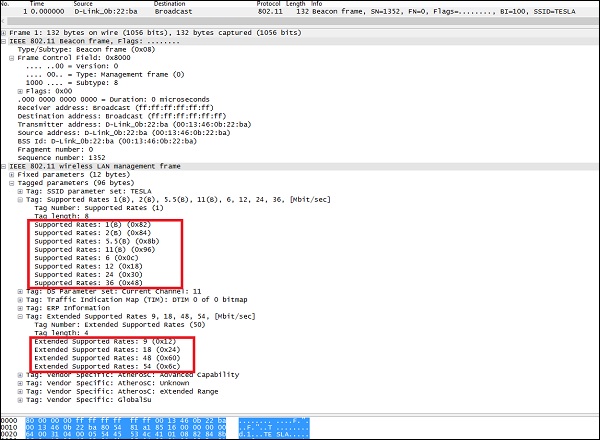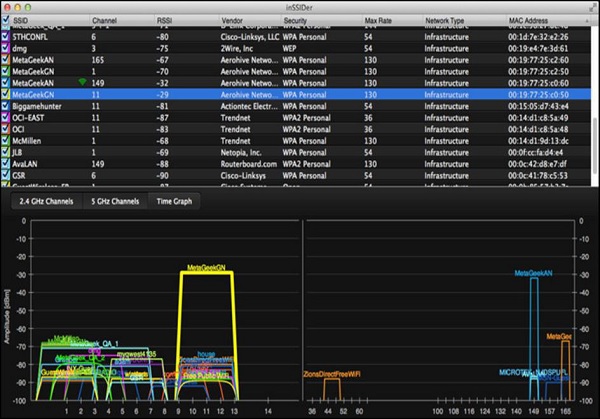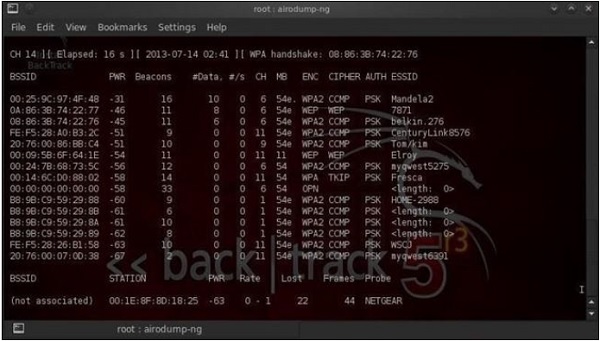
- Wireless Security - Concepts
- Wireless Security - Access Point
- Wireless Security - Network
- Wireless Security - Standards
- Wi-Fi Authentication Modes
- Wireless Security - Encryption
- Wireless Security Break an Encryption
- Wireless Threats
- Wireless - Access Control Attacks
- Wireless Security - Integrity Attacks
- Wireless - Confidentiality Attacks
- Wireless Security - DoS Attack
- Wireless Security - Layer 1 DoS
- Wireless Security - Layer 2 DoS
- Wireless Security - Layer 3 DoS
- Authentication Attacks
- Rogue Access Point Attacks
- Client Misassociation
- Misconfigured Access Point Attack
- Ad-Hoc Connection Attack
- Wireless Hacking Methodology
- Wireless Traffic Analysis(Sniffing)
- Launch Wireless Attacks
- Crack Wireless Attacks
- Wireless Security Tools
- Wireless Security RF Monitoring Tools
- Wireless Security - Bluetooth Hacking
- Wireless Security - Bluetooth Stack
- Wireless Security - Bluetooth Threats
- Wireless - Bluetooth Hacking Tools
- Wireless Security - Bluejack a Victim
- Wireless Security - Tools
- Wireless Security Pen Testing
- Wi-Fi Pen Testing
- Pentesting Unencrypted WLAN
- WEP Encrypted WLAN
- Pentesting WPA/WPA2 Encrypted
- Pentesting LEAP Encrypted WLAN
- Wireless Security Useful Resources
- Wireless Security - Quick Guide
- Wireless Security - Useful Resources
- Wireless Security - Discussion
Wireless Security - Standards
Since the beginning of IEEE 802.11 standard, the wireless networks were evolving at a significant pace. People saw the potential in this type of data transmission, therefore 802.11 successors were showing up, few years after each other. The following table summarizes the current 802.11 standards that are used in our times −
| Standard | Frequency | Max speed |
|---|---|---|
| 802.11 | 2.4 GHz | 2 Mbps |
| 802.11a | 5 GHz | 54 Mbps |
| 802.11b | 2.4 GHz | 11 Mbps |
| 802.11g | 2.4 GHz | 54 Mbps |
| 802.11n | 2.4 or 5 GHz | 600 Mbps |
| 802.11ac | 5 GHz | 1 Gbps |
As you can see, Wi-Fi networks are becoming faster and faster. Following are a couple of limiting factors why we don't see high speeds when we download data over Wi-Fi −
There is a difference between the speed and actuals throughout. Since wireless communication is half-duplex (single antenna can either transmit or receive at one time), the actual throughput is actually around 50% of the speed. This condition is only true, when there is one transmitter and one receiver, without any other clients involved, and without interferences (that leads to collisions and retransmissions).
The most cutting edge standards (802.11ac) are not that widely supported on end-devices. Most of the laptops or smartphones on the market provides support for 802.11a/b/g/n, but not yet for 802.11ac standard. In addition to that, some devices are equipped only with antenna, that supports 2,4 GHz frequency band, but not 5 GHz (that lead to lack of 802.11ac support by default).
Check Your Wi-Fi Network Standards
Let us see how you can check what standards are supported on the Wi-Fi network that you are joined to? You can check that using the number of approaches. I will present two of them here −
By sniffing for the wireless beacon frames
Every beacon frame contains the list of speeds that are supported by transmitting AP. Those speeds may be mapped to the standard directly.

The dump of the beacon frame above indicates that, this is probably AP, that is enabled for 802.11b/g support on 2,4 GHz frequency band.
802.11b supported rates (1, 2, 5.5, 11).
802.11g supported rates (1, 2, 5.5, 6, 9, 11, 12, 18, 24, 36, 48, 54)
By using some specific tools for wireless network discovery.
The following screenshot shows the dump from a wireless-based tool called "inSSIDer" that is running on Mac. It directly shows all the visible wireless networks, together with some of the details about every one of them.

From the above picture, one can see that some of the WLAN's support 130Mbps for maximum speed (those must be 802.11ac), other ones 54 and 36 Mbps (those may be 802.11 A or G).
On the other hand, you can also use popular Linux-based program called "airdump-ng" (we will go deeper into this one later on, during showcase of hacking - breaking the keys of the Wi-Fi network). As for the Windows environment, you may use popular the "Network Stumbler". All those tools work in a very similar way with each other.
